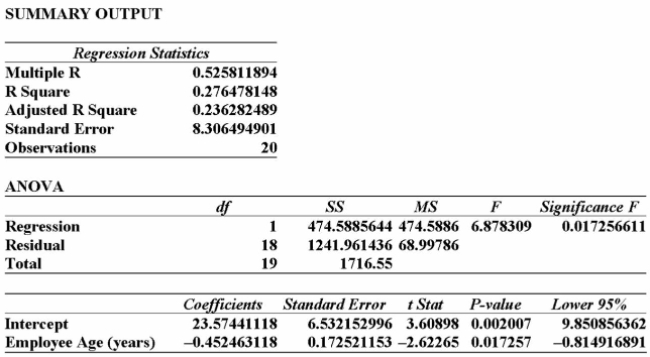Multiple Choice
Information was collected from employee records to determine whether there is an association
Between an employee's age and the number or workdays they miss. Excel results are summarized
Below: 
From this printout you determine:
A) the y-intercept of 23 makes no sense.
B) for each additional year of age, we can expect the number of days of absence to increase by 0.45 days.
C) for each additional year of age, we can expect the number of days of absence to decrease by 0.45 days.
D) the y-intercept of 23 makes no sense; for each additional year of age, we can expect the number of days of absence to increase by 0.45 days.
E) the y-intercept of 23 makes no sense; for each additional year of age, we can expect the number of days of absence to decrease by 0.45 days.
Correct Answer:

Verified
Correct Answer:
Verified
Q14: What is the variable used to predict
Q85: If the correlation coefficient between two variables
Q86: A sales manager for an advertising agency
Q87: i. The purpose of correlation analysis is
Q88: The partial MegaStat output below is regression
Q89: What is the difference between a confidence
Q91: The following table shows the number of
Q93: i. A correlation coefficient of -1 or
Q94: i. If the coefficient of correlation is
Q95: The partial MegaStat output below is regression